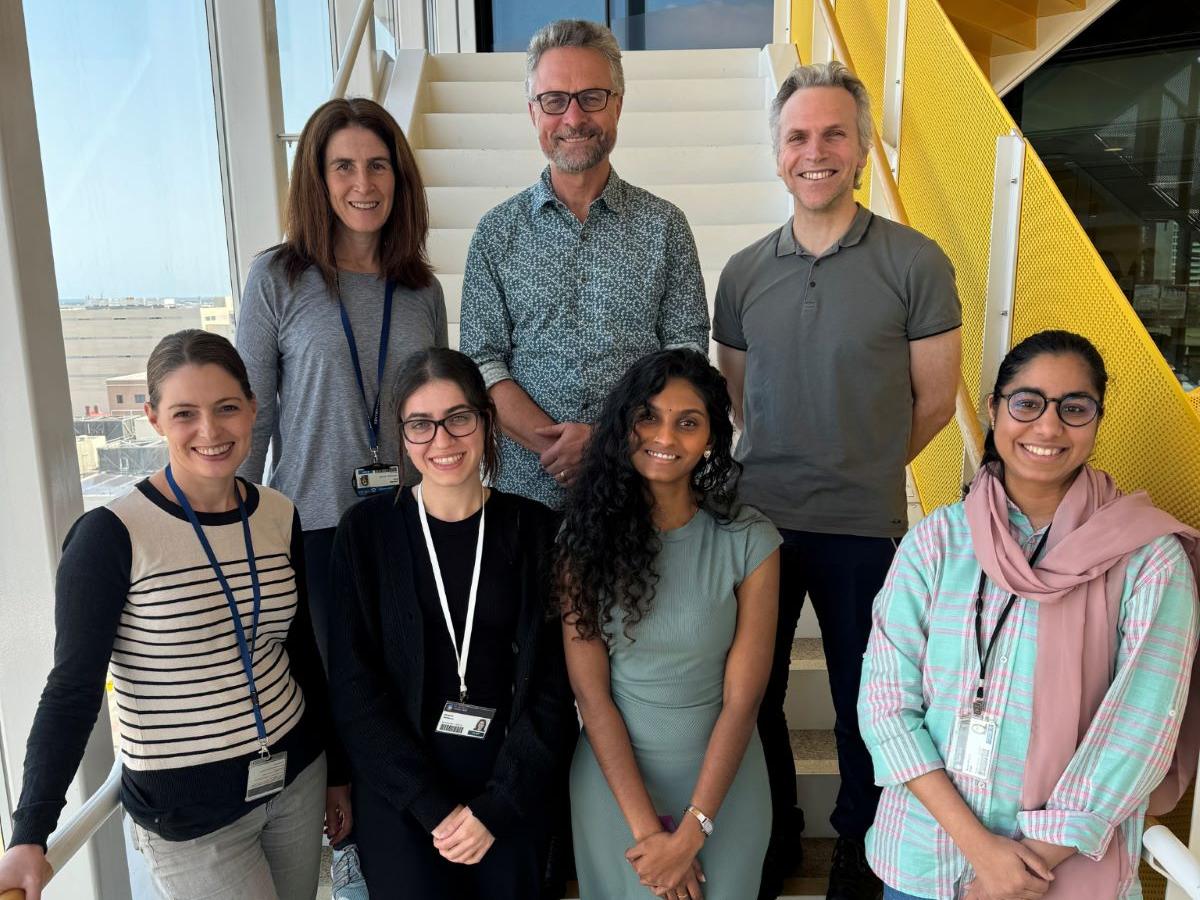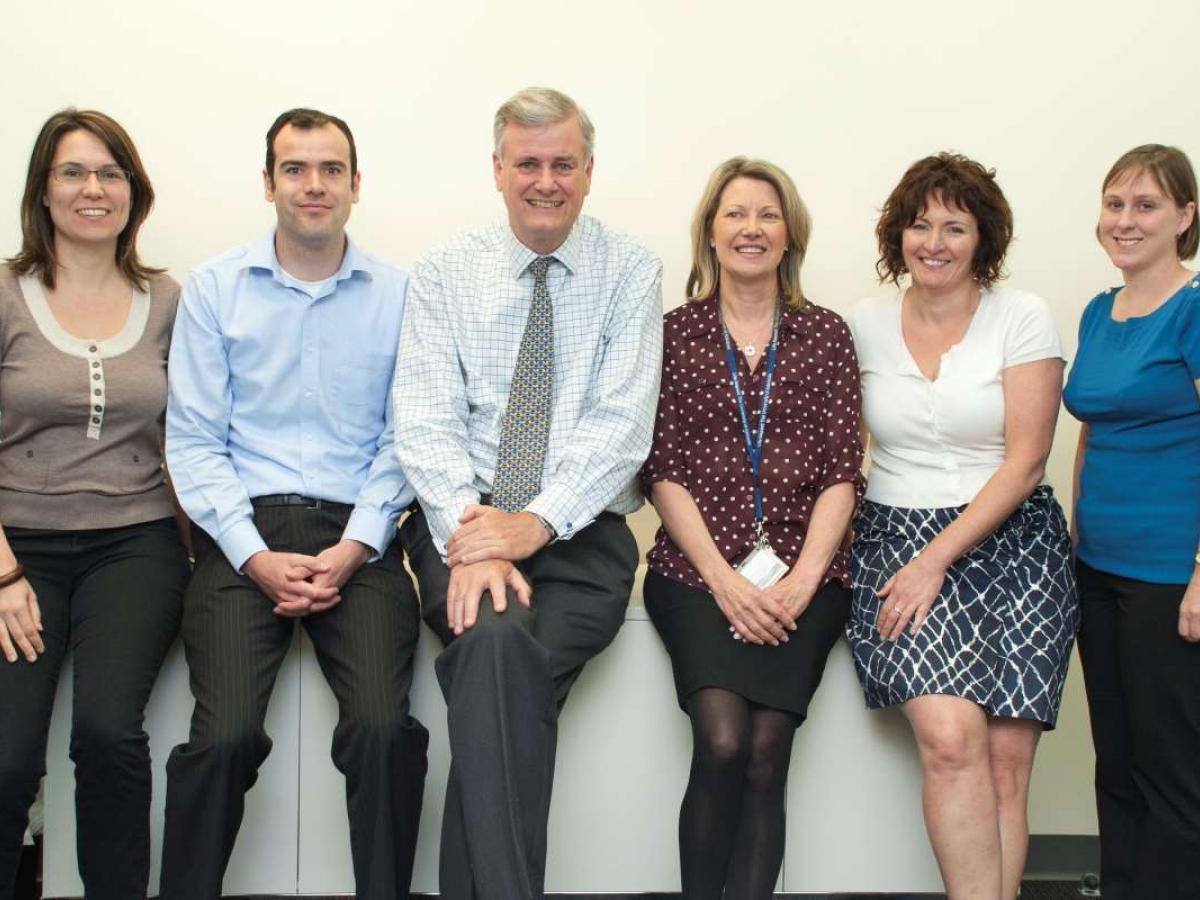Cerebral Palsy

Our research investigates the causes and mechanisms of cerebral palsy (CP). We primarily focus on genetic causes of cerebral palsy - including monogenic, oligogenic and polygenic – as well as the interactions of these genetic factors with environmental factors.
We apply genomics and multi-omics (including transcriptomics, epigenomics, proteomics), along with cell and animal models to uncover the functional impact of genetic variants and the underlying molecular mechanisms.
Research impact
- We have pioneered genomic investigations into the causes of cerebral palsy internationally. Utilising our internationally unique Australian Cerebral Palsy Biobank, we have demonstrated an underlying genetic cause for at least 1 in 4 individuals with cerebral palsy. This work has debunked the assumption that cerebral palsy is generally due to trauma or lack of oxygen at birth. Rather, poor condition of a baby at birth frequently reflects longstanding pathology, often originating from conception. This research is driving changes in diagnostic practice for cerebral palsy in Australia and internationally.
- We are driving international efforts to curate cerebral palsy genes to enable genetic testing for people with CP. You can find these resources at:
Our research is highlighting the importance of considering genetic causes in cerebral palsy diagnosis and the benefits this brings. Our goal is to enable earlier and more accurate diagnosis, with genomic testing to become a standard in the field.

Professor Jozef Gecz
Co-lead Cerebral Palsy research group
Many studies have shown that early intervention is the key to improving outcomes for people with cerebral palsy. Genomic testing can be performed as soon as any concerns or symptoms arise to facilitate the earliest and the most precise health.

Dr Clare van Eyk
Co-lead Cerebral Palsy research group
Top 5 publications
-
Redefining cerebral palsies as a diverse group of neurodevelopmental disorders with genetic aetiology
van Eyk, C. L., Fahey, M. C., & Gecz, J. (2023). Redefining cerebral palsies as a diverse group of neurodevelopmental disorders with genetic aetiology. Nature Reviews Neurology, 19(9), 542-555. 10.1038/s41582-023-00847-6
This review provides a comprehensive view of current knowledge of the genomic causes of cerebral palsy and the state of the field, with a specific focus on improving knowledge about the role of genetics amongst neurologists who are frequently on the front-line diagnosing and caring for children with cerebral palsy and their families. Our thorough review of the literature identified >500 genes with reported association with CP in the literature, 190 of which were recurrently reported. We also demonstrate for the first time a high level of genetic overlap with the developmental and epileptic encephalopathies which has been previously unappreciated.
-
Genomic and phenotypic characterization of 404 individuals with neurodevelopmental disorders caused by CTNNB1 variants.
Kayumi, S., Pérez-Jurado, L. A., Palomares, M., Rangu, S., Sheppard, S. E., Chung, W. K., . . . Corbett, M. A. (2022). Genomic and phenotypic characterization of 404 individuals with neurodevelopmental disorders caused by CTNNB1 variants. Genetics in Medicine, 24(11), 2351-2366. 10.1016/j.gim.2022.08.006
This paper systematically assesses the clinical presentation of a large cohort with genetic variants in a gene called CTNNB1 which is the most common monogenic (single mutation) cause of cerebral palsy. In previous studies, a genetic diagnosis of CTNNB1-syndrome was considered as grounds to remove a CP diagnosis, however this study demonstrated that a clinical diagnosis of CP is appropriate and should be given to individuals with CTNNB1 variants associated with nonprogressive lower extremity hypertonia. This finding highlights the importance of early and equitable access to genomic testing regardless of clinical labels.
-
Mutations disrupting neuritogenesis genes confer risk for cerebral palsy
Jin, S. C., Lewis, S. A., Bakhtiari, S., Zeng, X., Sierant, M. C., Shetty, S., . . . Kruer, M. C. (2020). Mutations disrupting neuritogenesis genes confer risk for cerebral palsy. Nature Genetics, 52(10), 1046-1056. 10.1038/s41588-020-0695-1
This publication reports a large, international collaborative study of 250 trios (parents plus child with CP) which builds on our seminal genetic investigations (McMichael et al. 2015). It was the first study to demonstrate statistical enrichment of damaging de novo (new) genetic variants in children with CP when compared to controls. Data from this study is continuing to result in identification of genetic diagnoses, including several novel genetic disorders.
-
Genetic or Other Causation Should Not Change the Clinical Diagnosis of Cerebral Palsy.
MacLennan, A. H., Lewis, S., Moreno-De-Luca, A., Fahey, M., Leventer, R. J., McIntyre, S., . . . Gecz, J. (2019). Genetic or Other Causation Should Not Change the Clinical Diagnosis of Cerebral Palsy. Journal of Child Neurology, 34(8), 472-476. https://doi.org/10.1177/0883073819840449
This Clinical Consensus Statement of the International Cerebral Palsy Genomics Consortium (ICPGC) stems from discussions at the 2nd Annual ICPGC meeting in 2018 and is based on robust discussion about whether a clinical diagnosis of cerebral palsy should be revised given genetic findings. This publication reports the consensus of the ICPGC: that the clinical diagnosis of cerebral palsy should not change despite the identification of a genetic or non-genetic cause if the person exhibits a non-progressive permanent disorder of movement and posture. This is a crucial clinical guideline to align CP with other neurodevelopmental disorders (e.g. epilepsy, autism, intellectual disability), and ensures accurate surveillance of CP rates and access to appropriate clinical care for children with CP.
-
Whole-exome sequencing points to considerable genetic heterogeneity of cerebral palsy
McMichael, G., Bainbridge, M., Haan, E., Corbett, M., Gardner, A., Thompson, S., . . . MacLennan, A. (2015). Whole-exome sequencing points to considerable genetic heterogeneity of cerebral palsy. Molecular Psychiatry, 20(2), 176-182. 10.1038/mp.2014.189
This seminal study pioneered genomic investigations in cerebral palsy. It describes findings from the first systematic investigation genomic investigation of children with CP, showing that 14% had genetic variants that were considered to be causative. Prior to this study, estimates of genetic contribution to CP were around 1-2% of cases, with the long-held belief that CP was always the result of “birth injury” or perinatal asphyxia leading to health inequality in this patient group.
Major collaborations
Research team

Back row: Dr Jesia Berry, Prof Jozef Gecz, Dr Mark Corbett
Front row: Dr Clare van Eyk, Kleopatra Pericleous, Dr Nandini Sandran, Saadia Saadi
Dr Clare van Eyk, Co-lead
Professor Jozef Gecz, Co-lead
Dr Jesia Berry, Project Manager
Dr Mark Corbett, Research Fellow
Kleopatra Pericleous, Research Officer
Saadia Saadi, PhD student
Rachel Hamant, PhD student
Surbhi Kamboj, Masters student
Alumni
|
|
|---|
The Australian Cerebral Palsy Biobank

Left to right: Jessica Broadbent, Dr Michael O’Callaghan, Emeritus Professor Alastair MacLennan, Dr Gai McMichael, Corinne Reynolds, Dr Catherine Gibson
The Australian Cerebral Palsy Biobank is an internationally unique resource enabling our research into the causes of CP. Set up by Emeritus Professor Alastair MacLennan (pictured here with the research team in 2012), our research has been generously supported and enabled over many years by funders including the National Health and Medical Research Council through Project Grants and Fellowships, Medical Research Future Fund, Tenix Foundation, Cerebral Palsy Alliance Research Foundation, Channel 7 Children’s Research Foundation, The Hospital Research Foundation and Commercial Motor Vehicles Foundation.
Current projects
-
Genomic testing pathways for precision health in cerebral palsy
Funded by Medical Research Future Fund Genomic Health Futures Mission Grant to Prof Jozef Gecz and Dr Clare van Eyk
Cerebral palsy (CP) is the most common motor disability in children, with prevalence of 1/700 in Australia and major economic and quality of life impacts. It is a heterogeneous disorder, diagnosed based on clinical criteria, not pathology or aetiology. Despite this, current care pathways are homogeneous. Perinatal asphyxia, once believed to be a leading cause of CP, has been shown to be responsible for <10% of cases. In contrast, monogenic causes are responsible for >25%, with >50% of these children likely to benefit from personalised medicine. In this project, we are systematically assessing genomic causes of CP in a clinically well-characterised Australian cohort with the aim of developing knowledge and tools for routine clinical diagnosis and to inform personalised care pathways for children with CP.
-
Developing a polygenic risk score for cerebral palsy
Funded by Cerebral Palsy Alliance Research Foundation grant to Dr Mark Corbett and Prof Jozef Gecz
Our research has shown that at least one quarter of CP is caused by rare genetic changes. It is also likely that combinations of genetic variants that are more common in the general population could confer a high risk for CP. Similar combined genetic effects (polygenic risks) are known to contribute to disorders that overlap with CP, including epilepsy. In this project, we are inferring polygenic risk for CP using data from large studies investigating common genetic changes contributing to the risk of known CP risk factors or comorbidities, including premature birth, low birth weight, epilepsy, autism spectrum disorder and cognitive ability.
-
The missing heritability of rare disease
Funded by Medical Research Future Fund Early and Mid-career Researcher Grant to Dr Clare van Eyk
Despite the broad implementation of massively parallel sequencing, >50% of rare disease patients still remain without a diagnosis after clinical and research testing. This project applies a coordinated multi-institutional, multi-disciplinary approach to rare disease diagnosis, targeting those which remain unresolved due to biological (phenotypic variability, tissue-specific mosaicism and genetic modifiers), analytical (interpretation of variants) or technical (incomplete genomic analysis) factors. Taking advantage of improved bioinformatic pipelines, along with emerging technologies such as long-read genome and transcriptome sequencing and optical genomic mapping, this project aims to end the diagnostic odyssey for patients and their families. Novel mechanisms or genetic loci will be further investigated for pathogenicity utilising a range of functional genomic approaches. For more information, see https://www.australiangenomics.org.au/research/the-rare-disease-collective/
In the media
Contact
Dr Clare van Eyk clare.vaneyk@adelaide.edu.au
Professor Jozef Gecz jozef.gecz@adelaide.edu.au







